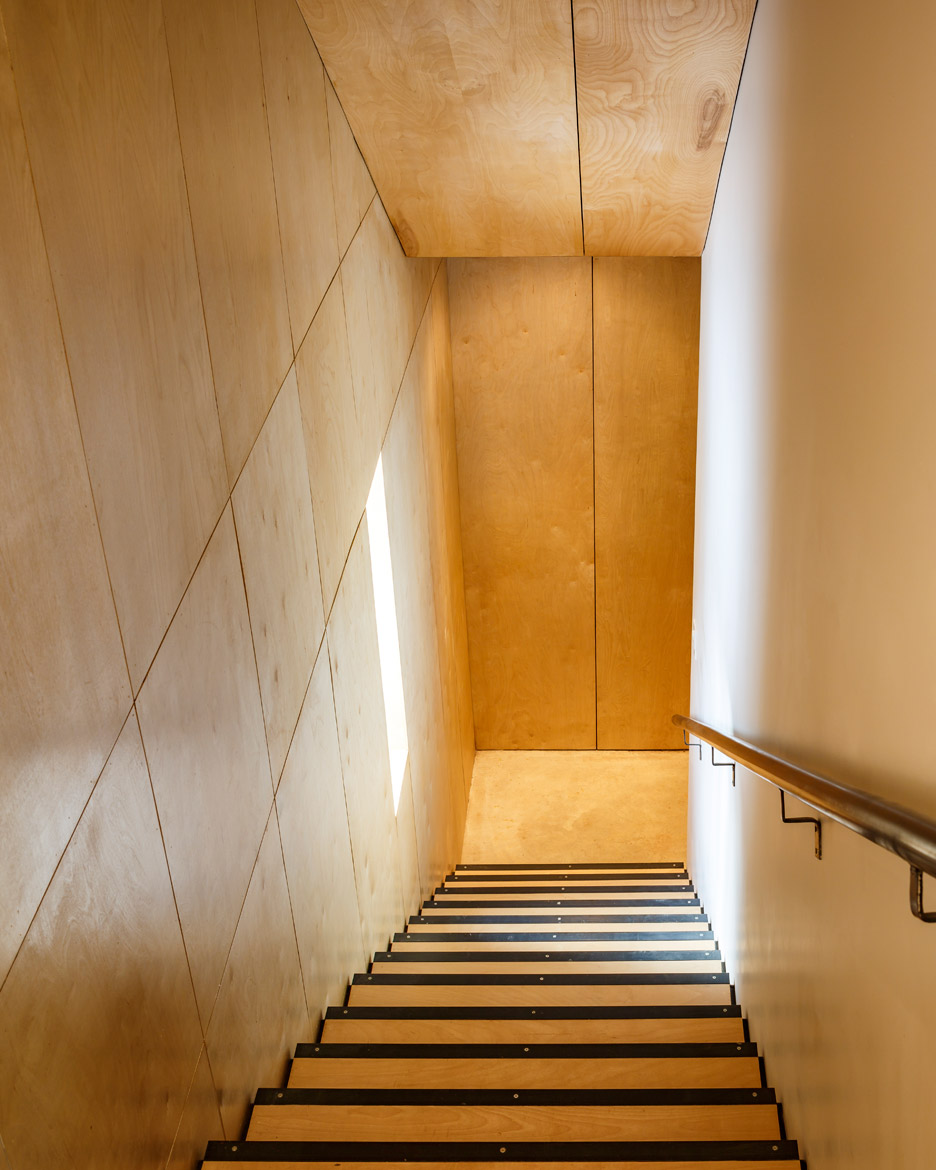Rabbit Snare Gorge cabin sits on a bluff in remote Nova Scotia
Plates of weathering steel frame the tall doorway to this timber-clad home, designed by architects Design Base 8 and Omar Gandhi for a remote site on Canada's Cape Breton (+ slideshow).
The cabin was built for an arborist and outdoor pursuits enthusiast among the rugged landscape of Rabbit Snare Gorge, from which it takes its name.
It is located on a 46-acre (6.5-hectare) parcel of land on the island of Cape Breton, at the eastern end of Nova Scotia.

New York collective Design Base 8 used the area's existing building typologies to inform the shape and materials for the tall three-storey home.
The group worked with Halifax-based architect Gandhi – who previously completed a wooden cabin for two artists in the same province – on the final design, detailing and construction phases of the project.

"The structure is linked to the local vernacular by a number of formal elements," said the architects.
"The archetypal gable and shed forms of the cabin are combined to open views and follow the path of the sun, emphasise the major interior spaces, and accentuate the verticality of the tower."

The house is clad in locally sourced wood, and features a gabled roof that allows it to shed snow and rainwater.
Rust-coloured weathering steel is used around the doorway, reaching up to the second storey to provide a sheltered entrance.

"The cabin's steel entry hoop takes its shape from the entry windbreaks unique to the Cape Breton and Newfoundland coastal communities," said the architects.
On the ground floor, the hallway provides access to the home's only bedroom and bathroom, as well as a space for services.

A straight flight of stairs leads to an open-plan living, kitchen and dining area, with expansive glazing that incorporates sliding doors.
These open out to a balcony with glass railings, oriented to offer views of the gorge and brook below, and the Gulf of St Lawrence beyond.

Inside, wood panelling covers the majority of floor, wall and ceiling surfaces.
The third-level mezzanine is named the Sunset Room, and also offers dramatic views through large corner windows.

A wood-burning stove and cushioned window seats create a cosy space for admiring the landscape in the evenings.
Due to its elevated location, the building has to withstand winter storms, corrosive salt-spray and year-round suetes – southeasterly winds that batter the island.

"The strong, local suetes demand a robust structural system to withstand major lateral and uplift loads," the architects said.
To combat these factors, every solid plane – including the interior partition walls – is composed of braced panels to act as a shear wall, a diaphragm or a stacked compression ring.

Timber and weathering steel are popular material choices for buildings in Nova Scotia. Other examples include a cabin with rough metal skin, and a wood-clad gym and spa.
Photography is by Doublespace.
Project credits:
Designer: Design Base 8
Architect: Omar Gandhi Architect
Engineer: Andrea Doncaster Engineering
Consultant: Joseph 'MacGee' MacFarlane




